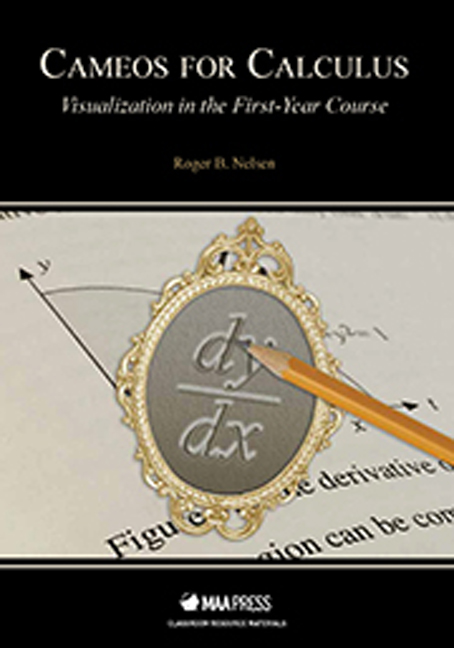Preface
Summary
A dull proof can be supplemented by a geometric analogue so simple and beautiful that the truth of a theorem is almost seen at a glance.
Martin GardnerBehold!
BhāskaraA thespian or cinematographer might define a cameo as “a brief appearance of a known figure,” while a gemologist or lapidary might define it as “a precious or semiprecious stone.” How might a mathematician define it? In this book I present fifty short enhancements for the firstyear calculus course in which a geometric figure briefly appears, which I call Cameos for Calculus. Some of the Cameos illustrate mainstream topics such as the derivative (Cameo 3), combinatorial formulas used to compute Riemann sums (Cameo 16), or the geometry behind many geometric series (Cameo 33). Other Cameos present topics accessible to students at the calculus level but not usually encountered in the course, such as the Cauchy-Schwarz inequality (Cameo 24), the arithmetic mean-geometric mean inequality (Cameos 10, 15, and 45), and the Euler-Mascheroni constant (Cameo 37).
In an early 1990s article “Visual Thinking in Calculus” (in Visualization in Teaching and Learning Mathematics, W. Zimmerman and S. Cunningham, editors, MAA, 1991), Walter Zimmerman wrote:
Of all undergraduate mathematics courses, none offers more interesting and varied opportunities for visualization than calculus. Most of the concepts and many problems of calculus can be represented graphically. Recognizing the importance of graphics in calculus, texts are adorned by numerous figures and diagrams. In many cases, however, these are little more than decorations. In selected cases, diagrams may be used directly as a tool in problem solving, but considering the calculus course as a whole, geometrical reasoning is used inconsistently at best, and the role of visual thinking is not seriously addressed.
Many of the Cameos are adapted from articles published in journals of the MAA, such as the American Mathematical Monthly, Mathematics Magazine, and the College Mathematics Journal. Some come from other mathematical journals, and some were created for this book. By gathering the Cameos into a book I hope that they will be more accessible to teachers of calculus, both for use in the classroom and as supplementary explorations for students.
- Type
- Chapter
- Information
- Cameos for CalculusVisualization in the First-Year Course, pp. ix - xPublisher: Mathematical Association of AmericaPrint publication year: 2015



